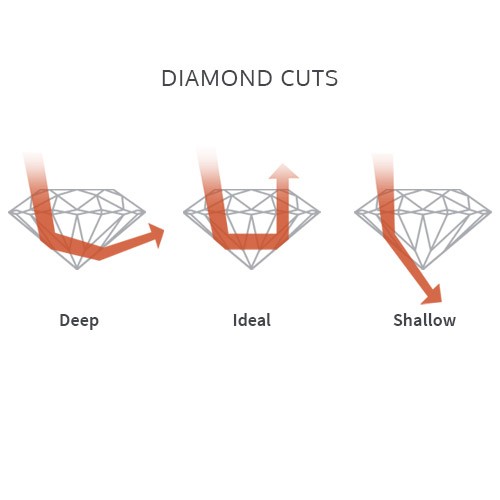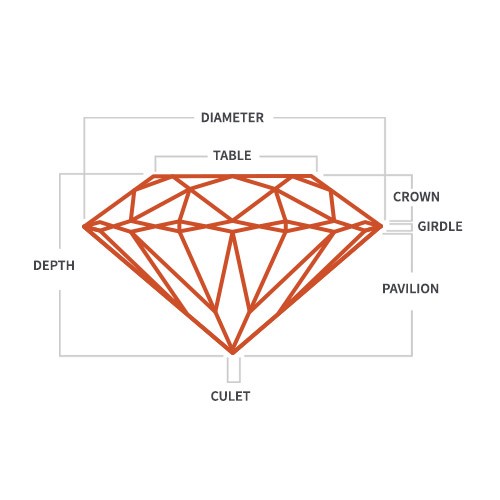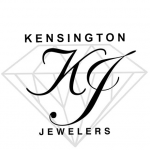
Diamond Education
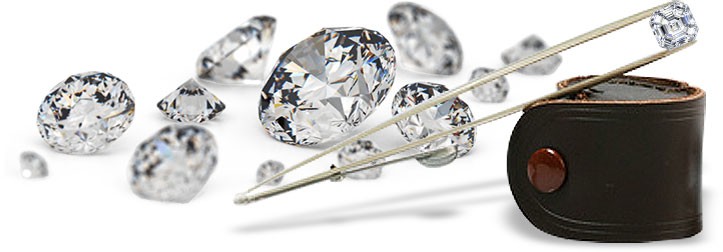
Diamond Education addresses the 4 C’s of diamonds – carat, color, clarity and cut. These four characteristics define the quality of the diamond and impact its price.
CARATS
CARAT IS THE UNIT IN WHICH THE DIAMOND IS MADE.
One carat equals to 0.2 grams or 200 milligrams. Carat weight is the prime factor that determines the weight of a diamond. Larger diamonds are undoubtedly costlier. Carat makes expressing diamond weight easier as compared to milligrams. Instead of giving three labels to diamonds weighing 20 milligrams, 211 milligrams or 220 milligrams, we use carat. It fits the diamonds in one category, placing them in one-carat range.
One should not forget that high carat weight does not necessarily mean a larger looking diamond. Even diamonds of the same weight can differ on a basis of other factors. One of the factors is cut that influences perceived size. Large diamonds are rare to find and much in demand as compared to small diamonds even of the same quality. The price of a one-carat solitaire diamond ring is more than a ring with smaller diamonds making up the same carat weight. Diamond comparison is not effective until you compare the diamonds of similar features and qualities. While comparing the value of different diamonds, divide cost of every diamond in accordance with the carat weight, and then calculate its price per carat.
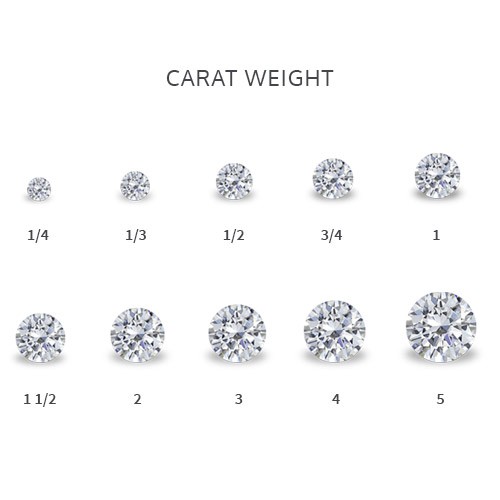
COLOR
Color is the absence and presence of the color in the diamond
While the jeweler talks about the diamonds color, he is referring to the absence and presence of the color in the diamond. Color of a diamond is a result of diamond’s composition and does not change with time. Colorless diamonds allow light to travel through them as compared to the colored diamonds. These diamonds also emit more fire and sparkle. The process, through which a diamond is formed, is the deciding factor for its color. The whiter the diamond is the higher value it will have.
Color scale
For grading the color of diamonds, jewelers refer to GIA’s color scale. The scale starts the rating with D for the colorless diamonds and grows up to Z as the traces of light yellow or brown color occur in the diamond. Diamonds graded from D to F are among the most desirable and valuable stones. These diamonds are a delight for the diamond lovers. Nevertheless, if you have a low budget, you can also find good diamonds with lower grades. These diamonds are not exactly colorless but show no color to untrained eye.
Setting
Consider the setting of the diamond before choosing the grade of a diamond. If the setting for your diamond is platinum or white gold, go for high color grades. If you want to get it fitted in yellow gold, slightly low grade diamonds can also look great. While you will find faint yellow hint in the diamonds that are graded from J to M, the color can be camouflaged by choosing the right setting for the stone. Many people prefer the warm glow given by low color diamonds.
Fluorescence
Exposing to ultraviolet light with long wave will reveal fluorescence in a diamond. Under most of the lighting conditions, you wouldn’t see this effect. Some people prefer diamonds without fluorescence while others look for it. It is all about the aesthetics.
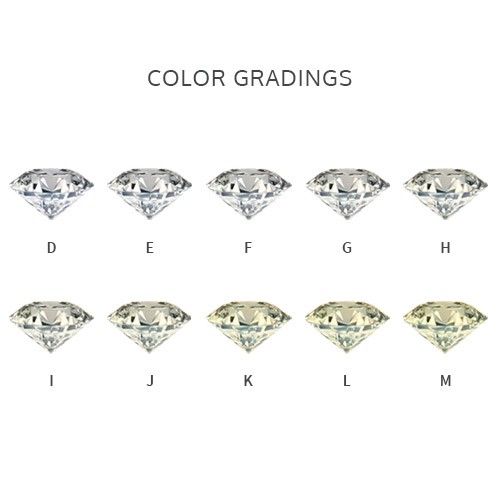
CLARITY
Defining diamond clarity means finding out characteristics of a diamond, such as blemishes and inclusions. If you consider the pressure under which diamonds are created, and that they are not produced in sterile laboratory, it won’t be a surprise to find that most of these diamonds are not free of flaws.
BLEMISHES AND INCLUSIONS DEFINE THE VALUE OF A DIAMOND
Usually there are two kinds of flaws you can find in diamonds – blemishes and inclusions. Inclusions are naturally occurring internal flaws that found in diamonds including cracks, air bubbles, and mineral. However, most blemishes occur at the time of cutting process. The diamonds that have less blemishes and inclusions are more valuable as compared to those that have more.
On a basis of clarity, diamonds receive grades under loupe magnification. These grades vary for diamonds that do not have blemishes or inclusions and diamonds that do. There are different grades of diamonds like F, IF, VVS1-VVS2, SI1-SI2 and I1-I2-I3. Diamond’s clarity grade is proof of the identity of the diamond.
GIA certificate
GIA certificates consist of a diamonds inclusion plot, as there is no similarity between two diamonds. The plot of the GIA certificate ensures the worth of the diamond you are planning to buy. It lets you have the assurance that the diamond you are receiving is the one you have paid for. If you are in a fix about what clarity grade you should choose, flawless is the best and rarest clarity grade.
Diamonds that are VS and VVS grades are great in terms of appearance and value. You can also invest in less expensive options that include SI2 and SI1 where inclusions can also not be seen by the naked eye.
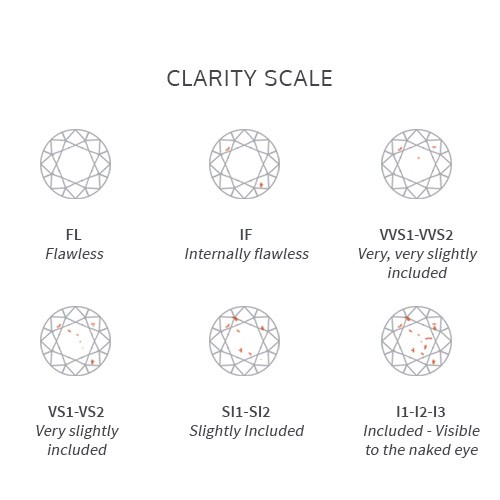
CUT
Diamond cut is its reflective qualities
People often confuse diamond shape with diamond cut. Shape of the diamond is the outward appearance. When the diamond jewelers use the word cut, they are referring to reflective qualities of the diamond, not their shape. Quality of diamond cut is a crucial part of 4C’s of diamonds.
A GREAT CUT PROVIDES BRILLIANCE TO THE DIAMOND
A great cut provides brilliance to the diamond. Finish and angles of all the diamonds let you determine the diamond’s ability to handle light that results in its brilliance.
When a diamond has a good cut, light travels through it easily, adding to its spark. The light passing through the diamond because of cut is alone responsible for making the diamond shine. This increases the diamond’s desirability. If a diamond is not cut properly, light enters through the table after reaching the facets. It leaks out from bottom or side, cutting down the diamond’s brilliance.
Many gemologists believe that best of diamond cuts are made after following a formula calculated for maximizing the brilliance. The formula is in the proportions of the diamond, especially in the context of how depth compares to diameter. If you are buying diamonds without GIA certificates, invest some time finding certified diamonds and gain some knowledge for identifying better cuts.
Variance in proportions to poor cut and ideal cut is difficult to find out by the casual observer. As cut is important, you can make use of different grading methods for determining the cut of a specific diamond. Selection of grade cut is based on a person’s preference. For making the best selection, one needs to be familiar with different grades.
Grades
Ideal diamond cut has maximum brilliance. The small table size of these diamonds work in the best possible way to create fire or dispersion. With ideal cut diamonds, you can be sure of having the finest return of money you invested. This category is just for round shaped diamonds.
Premium cuts are also equivalent to ideal cuts in round diamonds but the price is slightly lower. Very Good diamond cuts reflect maximum light entered in, providing fair amount of brilliance to the diamonds.
Good cut diamonds reflect most of the light that passes through them. The proportion of these diamonds is outside the preferred range. Diamonds that fall under this category will allow you save money without compromising on beauty and quality of the diamond.
Fair and Poor quality diamonds reflect very little proportion of light. These diamonds are cut in order to increase carat weight above all the other considerations.
